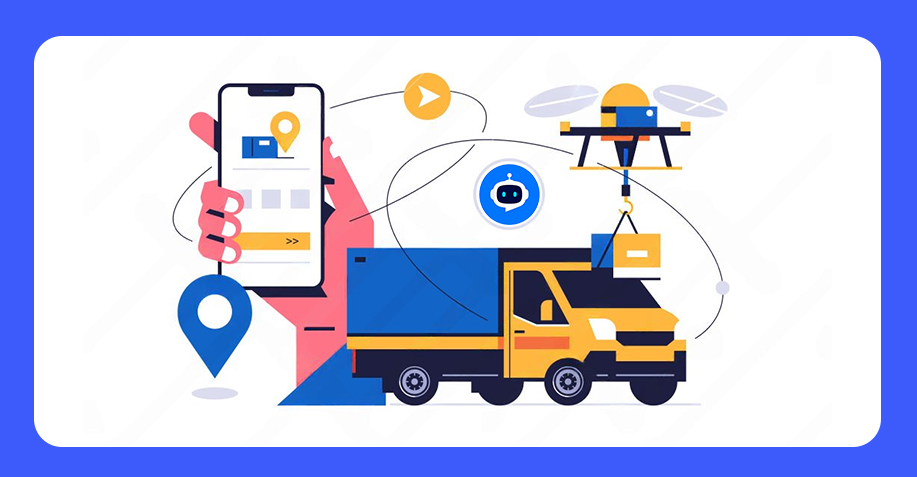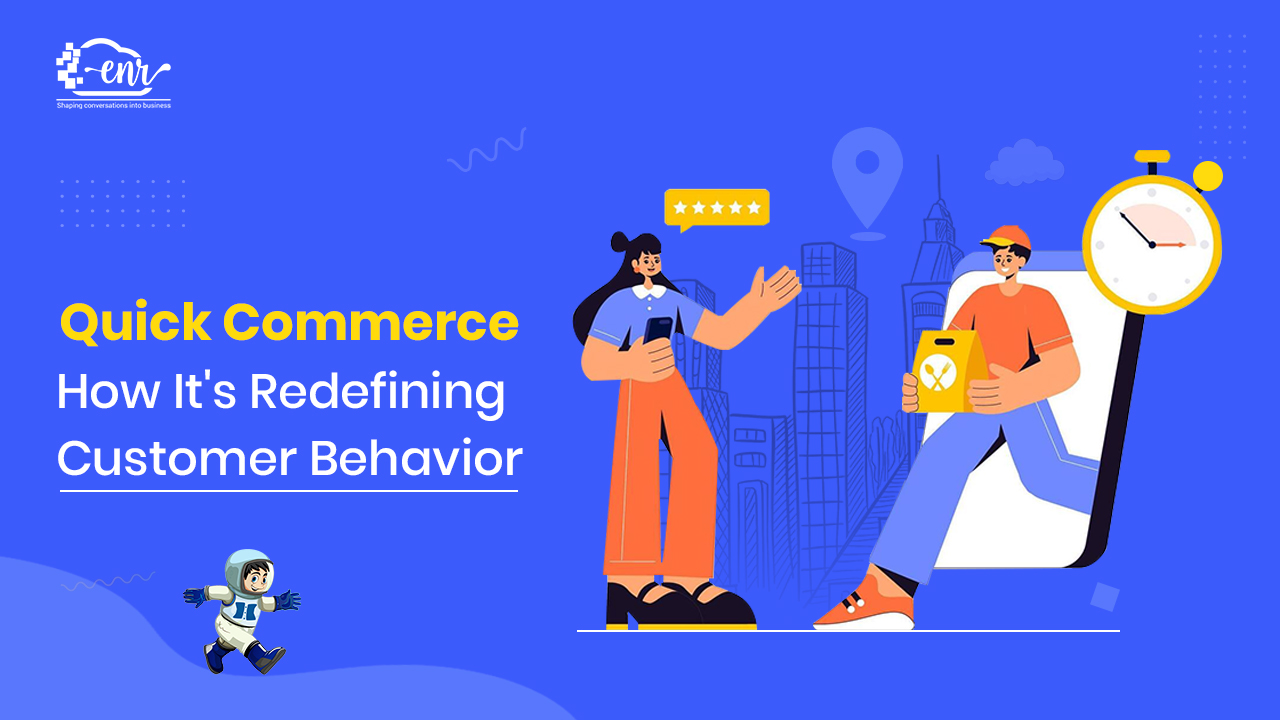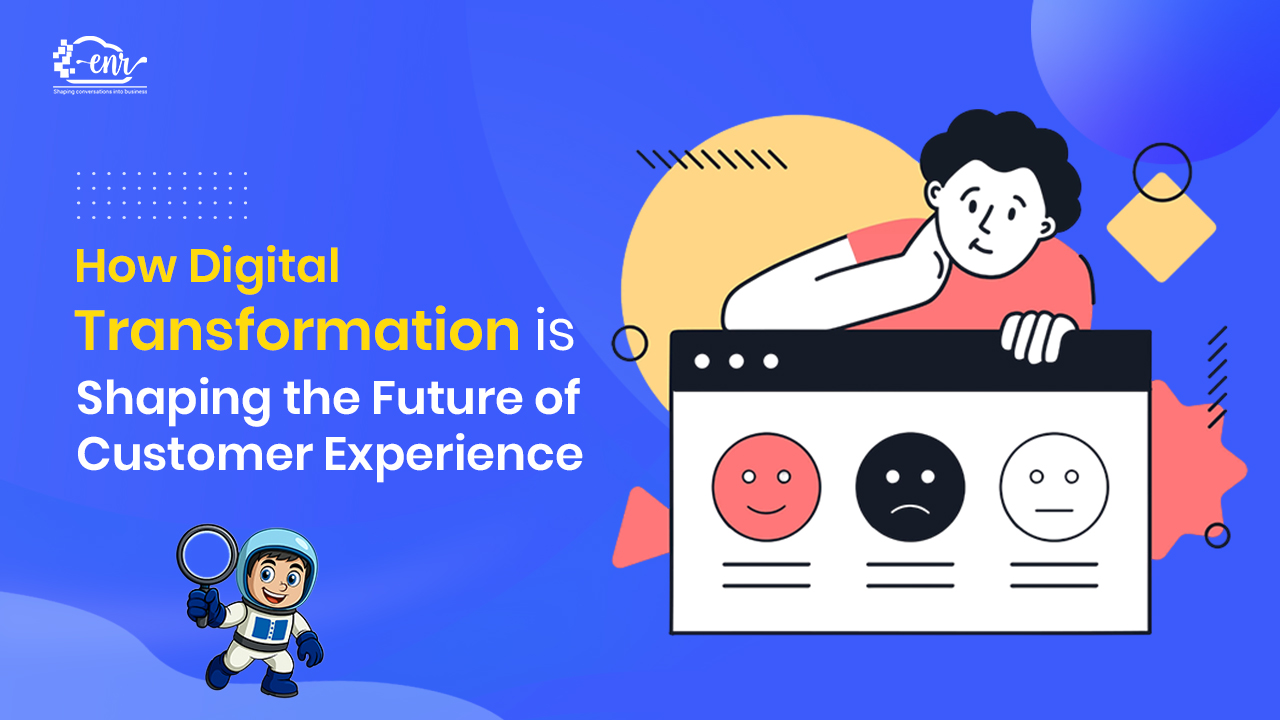Table of Contents
ToggleQuick Commerce in the Quick- Changing Landscape
You think of it, we deliver it– That’s the aim of Quick Commerce, or Q-Commerce. Q-commerce, has revolutionized the concept of quick delivery with the ‘on-time delivery’ in less than an hour. It has transformed customer expectations, redefined how businesses operate, and reshaped the online shopping landscape. It has a big influence on customer behavior as the 10–30-minute deliveries are convenient and reduces the need to wait. The modern customer expects ultra-fast deliveries, and the rapid delivery mechanism is what that sets Q-commerce apart.
In this blog, we look into the details of quick commerce, its future, how it works, its advantages, and its deep impact on customer behavior.
The rise of Quick Commerce Landscape

Quick e-commerce means instant delivery. Technological changes, rising demand for quick service, and consumer awareness are three big factors behind this change and its influence on the market landscape. Q-commerce is one step ahead of e-commerce as it guarantees delivery in minutes and has reshaped the customer behavior over the last few years, especially during and post the covid era.
- In a pre-Covid study, 80% of customers in the US said that the key ingredients to good customer experience was efficiency and convenience.
- Online deliveries in 2022 saw a 37% increase.
- The last-mile deliveries are set to have an estimated value of $72 billion by 2025.
- India’s quick commerce market is projected to reach the revenue of $5 billion by 2025 and to $9.95 billion by 2029.
- The current value of the Q-commerce market is valued at more than $3.34 billion.
Brands that have embraced the quick commerce waggon are the biggest beneficiaries of the shift in customer behavior and will continue to reap the benefits in the near future.
Understanding Quick Commerce
Quick commerce is a type of e-commerce, that gives ultra-fast delivery services (10mins to an hour). Speed, convenience, and instant gratification are the three reasons of Q-commerce’s popularity. Traditional deliveries of products and services can take up to several days but they have a wide range of products, Q-commerce on the other hand has limited types of products.
Q-commerce relies on localized dark stores that help in quick dispatch and deliveries. The model relies on locally sourced products that can be easily provided on receiving orders. The common Indian apps that are popular in Quick Commerce include Blinkit, Dunzo, Zepto, Swiggy Instamart, BigBasket, Flipkart Quick, etc. These apps have made their interface very customer-centric and offer features like order tracking, ‘people also like,’ quick issue resolutions, personalized recommendations, saving, and bundle offers to attract and retain customers.
Key Features of Quick Commerce

The world of technology has a big impact on customer behavior. Unlike the past, when the only influencing factors were advertisements and word of mouth; today’s customer is influenced by social media, online content, videos, reviews, etc., and relies on personalized experiences to make a sale.
Key Features of Q-commerce that make it a Favorite of Customers are:
- Hyperlocal Deliveries from micro-fulfilment centers or dark stores.
- Small basket size, making them ideal for consumers who need immediate items or are doing impulse shopping. Q-commerce lets the business try out new products in small quantities, making it a convenient shopping experience.
- Optimize delivery routes and stock availability. Quick commerce uses AI technology to identify consumer behavior and demand patterns to curate an in-demand inventory. This makes the transportation streamlined and deliveries faster.
- 24/7 operations to cater to urgent demands, making them reliable, which is a boost to the brand image and fosters trust and loyalty.
How is quick commerce changing customer behavior?
Using q-commerce saves time, money, and energy for both parties as customers are getting products delivered to their doorstep at any hour of the day, and companies are selling more products.
Here is how the advent of q-commerce is influencing customer behavior across the globe:
Instant Gratification has Become the Normal
Customers of today expect the on-demand convenience of quick deliveries. The days of advance purchase planning are on their way out. Medicines, groceries, or snacks are all available in no time at all. For example, if you want to have a packet of chips, you can get them in just 15 minutes through quick commerce without waiting for online order delivery or going to the store.
Shift from Bulk Buying to Small Orders
In the traditional world, shopping in bulk for more savings was the done thing. Q-commerce does not have a minimum order requirement, and customers are taking advantage of it by making small, frequent purchases as the need arises instead of stocking up.
Increase in Impulse Purchases
Q-commerce products arrive quickly, and this feature helps tap into the human impulse-buying behavior or cater to their whims. For example, if you need popcorns for the movie night; instead of waiting for the purchase, you can order from Blinkit and enjoy the movie with hot popcorn.
Traditional Shopping Takes a Backseat
Consumers are moving away from stocking up from supermarket visits, and ordering online from the convenience of their homes or offices. For example, instead of taking the cart to DMart on Sunday, the consumer is ordering online and spending the day on personal activities.
Higher Expectations Across all Industries
A big shift in consumer behavior has come with higher expectations across all sectors. The success of quick commerce has been a wake-up call for industries beyond food and groceries. Customers expect and demand speed from other sectors like pharmacies, electronics, and beauty and personal care.
Subscription and Loyalty Programs see Increased Interest
Q commerce offers loyalty programs and subscriptions to retain customers. These include offers like free products, free delivery, special discounts, and cashback rewards. More consumers are opting for such deals if they are getting good consumer service along with it.
Key Driving Factors behind the Quick Commerce Market Boom

Urban lifestyles: In big cities, time is a precious commodity. Q-commerce understands this and saves time for consumers by enabling them with the choice to order essentials quickly without disrupting their busy schedules.
Changing Consumer Behavior and Expectations: Personalized experiences are the key to winning the hearts of Gen Zs and millennials as they are accustomed to instant indulgence. Quick commers caters to this consumer behavior by offering unparalleled delivery speed and order convenience at their fingertips.
Technological Advancements: The meteoric rise of q-commerce is boosted by technological innovations such as AI, AR, chatbots, robotic automation, cloud platforms, etc. It enables quick delivery, and real-time inventory management, and enhances the ability to handle high demand while maintaining top-notch service round the clock.
COVID-19 Pandemic Push: The pandemic, social distancing, and work-from-home culture have accelerated the adoption of delivery services that don’t have a wait time, especially for the essentials.
Easy Integration with Other Industries: The on-demand economy customer behavior has Quick commerce collaborating with local businesses like the grocers, kirana stores, D2C brands, general stores, etc. to improve the last-mile delivery times. This has created a win-win situation for consumers and businesses alike. The q-commerce platforms help local businesses generate more revenue through targeted advertisements, reduced selling costs, and maintained supply of items.
Conclusion
Quick commerce, though relatively new, has created new and high standards for e commerce. Its speed, convenience, and efficiency are reshaping consumer behavior by making instant delivery a norm rather than a luxury. As technology continues to improve, q-commerce will continue to play a big role in how, when, and what people buy in the evolving digital economy.
Read Also: Quick Commerce vs. E-commerce: Choosing the right business Model for your startup growth
Written By – Amit Bhateja
Amit Bhateja is the co-founder of enrcloud and helping brands and Unicorns from the last 15+ years and overachieve their Engagement and Retention goals. He is passionate about solving customer problems with modern technology, new age solutions, and consultancy approach. Besides Building ENR, He enjoys reading books, spending time with his family and Teammates, traveling, meeting new people, learning new things, and love to close the business deals.





